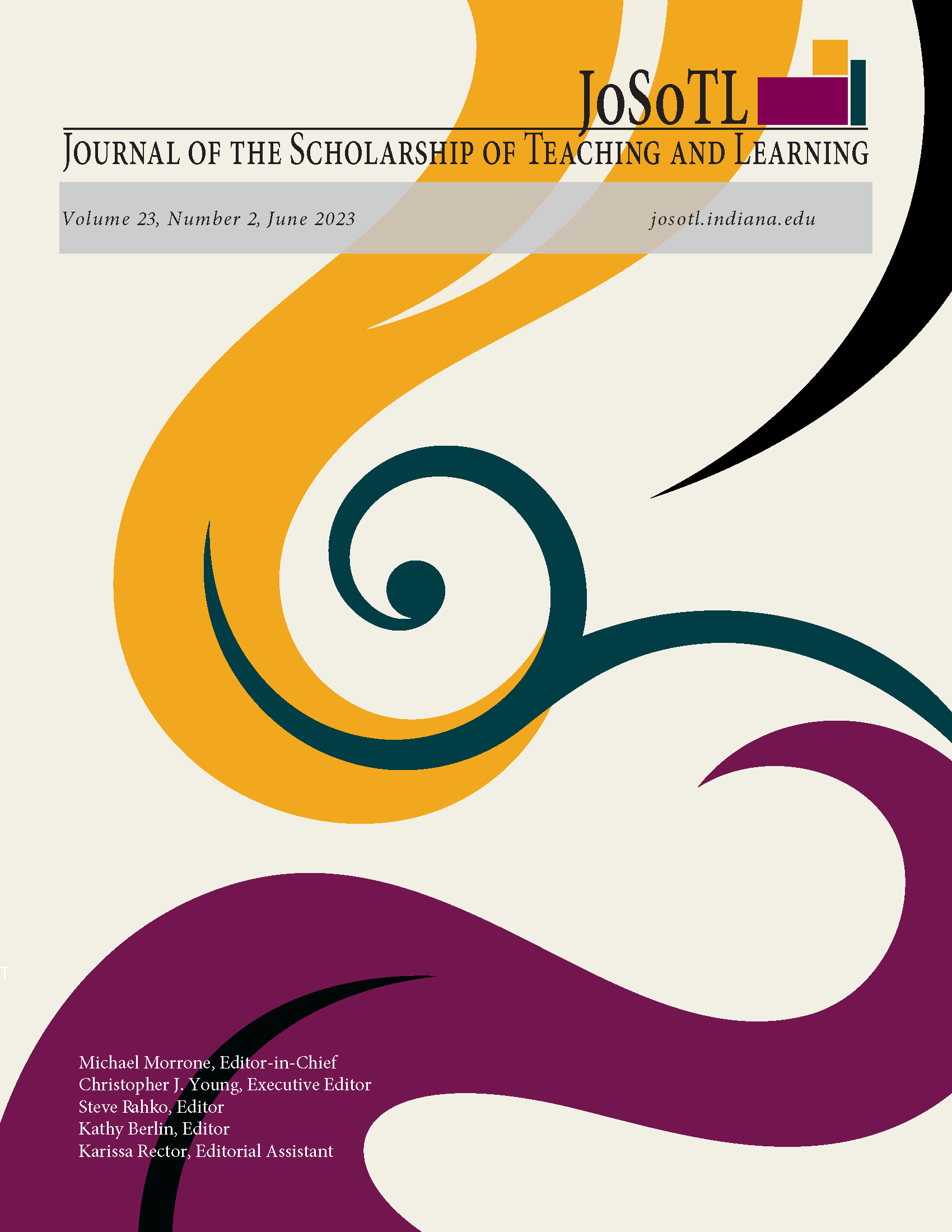Increasing Student Engagement with Instructor Feedback using Criteria-Based Rubrics as a tool for Self-Assessment
Main Article Content
Abstract
Abstract: Students need to actively engage with instructor feedback to improve their work, but many struggle incorporating feedback to improve their skills. This paper describes a strategy for using criteria-based rubrics as self-assessment tools to increase student engagement with instructor feedback. Initially, the instructor creates a criteria-based rubric aligned with the objectives of an assignment. Students then use this rubric to self-assess their work. This is followed by the instructor evaluating the student self-assessment to provide feedback. The student then has an opportunity to apply this feedback to their work prior to submission, as well as reflect on the quality of their work. Additional application of this strategy to the process of peer-review is also discussed.
Downloads
Article Details

This work is licensed under a Creative Commons Attribution 4.0 International License.
- Authors retain copyright and grant the Journal of the Scholarship of Teaching and Learning (JoSoTL) right of first publication with the work simultaneously licensed under a Creative Commons Attribution License, (CC-BY) 4.0 International, allowing others to share the work with proper acknowledgement and citation of the work's authorship and initial publication in the Journal of the Scholarship of Teaching and Learning.
- Authors are able to enter separate, additional contractual agreements for the non-exclusive distribution of the journal's published version of the work (e.g., post it to an institutional repository or publish it in a book), with an acknowledgement of its initial publication in the Journal of the Scholarship of Teaching and Learning.
- In pursuit of manuscripts of the highest quality, multiple opportunities for mentoring, and greater reach and citation of JoSoTL publications, JoSoTL encourages authors to share their drafts to seek feedback from relevant communities unless the manuscript is already under review or in the publication queue after being accepted. In other words, to be eligible for publication in JoSoTL, manuscripts should not be shared publicly (e.g., online), while under review (after being initially submitted, or after being revised and resubmitted for reconsideration), or upon notice of acceptance and before publication. Once published, authors are strongly encouraged to share the published version widely, with an acknowledgement of its initial publication in the Journal of the Scholarship of Teaching and Learning.
References
Ali, N., Ahmed, L., & Rose, S. (2018). Identifying predictors of students’ perception of and engagement with assessment feedback. Active Learning in Higher Education, 19(3), 239-251. https://doi-org.liblink.uncw.edu/10.1177/1469787417735609
Andrade, H. & Du, Y. (2007). Student responses to criteria‐referenced self‐assessment. Assessment & Evaluation in Higher Education, 32(2), 59-181. https://doi-org.liblink.uncw.edu/10.1080/02602930600801928
Bell, A., Mladenovic, R. & Price, M. (2013). Students’ perceptions of the usefulness of marking
guides, grade descriptors and annotated exemplars. Assessment & Evaluation in Higher
Education, 38(7), 769-788. https://doi-org.liblink.uncw.edu/10.1080/02602938.2012.714738
Bloxham, S., Boyd, P. & Orr, S. (2011). Mark my words: The role of assessment criteria in UK
higher education grading practices. Studies in Higher Education, 36(6), 655-670. https://doi-org.liblink.uncw.edu/10.1080/03075071003777716
Brookhart, S.M., & Chen, F. (2015). The quality and effectiveness of descriptive rubrics. Educational Review, 67(3), 343-368. https://doi-org.liblink.uncw.edu/10.1080/00131911.2014.929565
Brookhart, S.M. (2013). How to create and use rubrics for formative assessment and grading. ACSD.
Hattie, J., & Timperley, H. (2007). The power of feedback. Review of Educational Research, 77(1), 81-112. https://doi-org.liblink.uncw.edu/10.3102/003465430298487
Komarraju, M., Musulkin, S., & Bhattacharya, G. (2010). Role of student–faculty interactions in developing college students’ academic self-concept, motivation, and achievement. Journal of College Student Development, 51, 332-342. http://dx.doi.org/10.1353/csd.0.0137
Lew, M. Alwis, W. & Schmidt, H. (2010). Accuracy of students' self‐assessment and their beliefs about its utility. Assessment & Evaluation in Higher Education, 35(2), 135-156. https://doi-org.liblink.uncw.edu/10.1080/02602930802687737
McKevitt, C.T. (2016). Engaging students with self-assessment and tutor feedback to improve performance and support assessment capacity. Journal of University Teaching & Learning Practice, 13(1), 1-20. http://ro.uow.edu.au/jutlp/vol13/iss1/2
Panadero, E., & Jonsson, A. (2013). The use of scoring rubrics for formative assessment purposes revisited: A review. Educational Research Review, 9, 129–144. https://doi.org/10.1016/j.edurev.2013.01.002
Yorke, M. (2003). Formative assessment in higher education: Moves towards theory and the enhancement of pedagogic practice. Higher Education, 45(4), 477–501. http://www.jstor.org/stable/3447452
